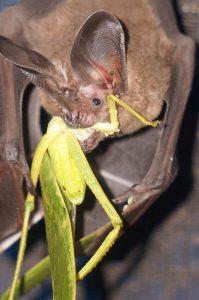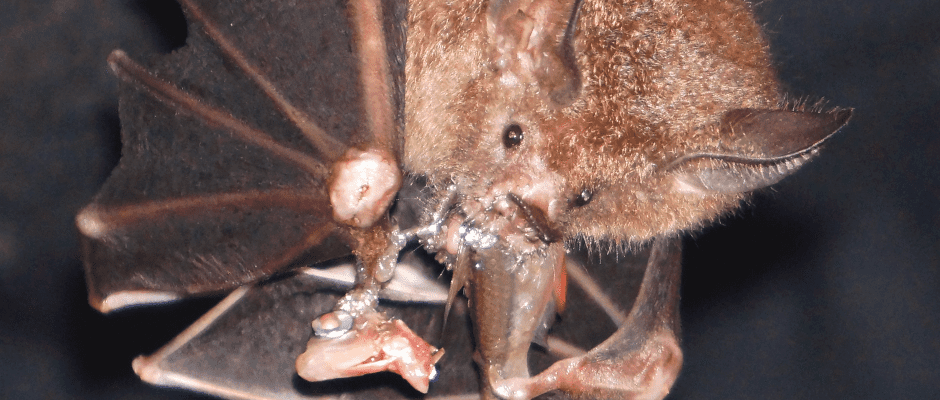Share this article
Bats learn about food from other species
Bats seem to follow the leader to look for food sources, sometimes even when the leader is from a different species.
In a study published in Science Advances, researchers found the fringe-lipped bat (Trachops cirrhosus), which listens for its prey rather than using echolocation, can learn where sufficient food sources are from the white-throated round-eared bat (Lophostoma silvicolum).
Past research showed that fringe-lipped bats, which consume frogs in wet seasons and katydids in dry seasons, learn from members of the same species where to find viable food sources.

A white-throated round-eared bat eats a katydid. In a recent study, fringe-lipped bats learned cues from white-throated bats to find prey sources. ©Krista Patriquin
“The natural question was, of course, if they can learn from each other, is it possible they can learn from other species with similar feeding behavior and food preferences?” said Krista Patriquin, lead author of the study, who completed the research as a visiting postdoctoral fellow with the Smithsonian Tropical Research Institute.
In the study, Patriquin and her colleagues used artificial tones to test their theory. They first trained the white-throated round-eared bat to associate a high-pitched pure tone sound with prey.
Then, the researchers tested if the fringe-lipped bats would follow the white-throated round-eared bats to the food source. They found that despite the species difference, they caught on relatively quickly. In just 30 trials, they associated the fabricated sound with food, and it took them roughly the same time to learn from their own species.
“It was surprising to us,” Patriquin said. “We thought it would take longer because they’re not familiar with one another. We thought they would trust their own species more quickly.”
These results could provide some insight into bat conservation by shedding light onto how bats can respond to changes in the environment, she said, particularly as climate change and land development shift their historical ranges.
As the deadly white-nose syndrome spreads through bat populations in North America, Patriquin said, it’s plausible that bats may be able to learn to avoid infected caves.
The study may also suggest one reason bats have been so successful, she said.
“There are more than 1,300 species,” Patriquin said. “Maybe that’s part of it. They can learn from each other, which allows them to quickly adapt as they move throughout the world.”
Header Image: A fringe-lipped bat eats a piece of fish. While the species does not eat fish in the wild, researchers trained them to feed on fish since they were easier to get ahold of than frogs. ©Krista Patriquin








